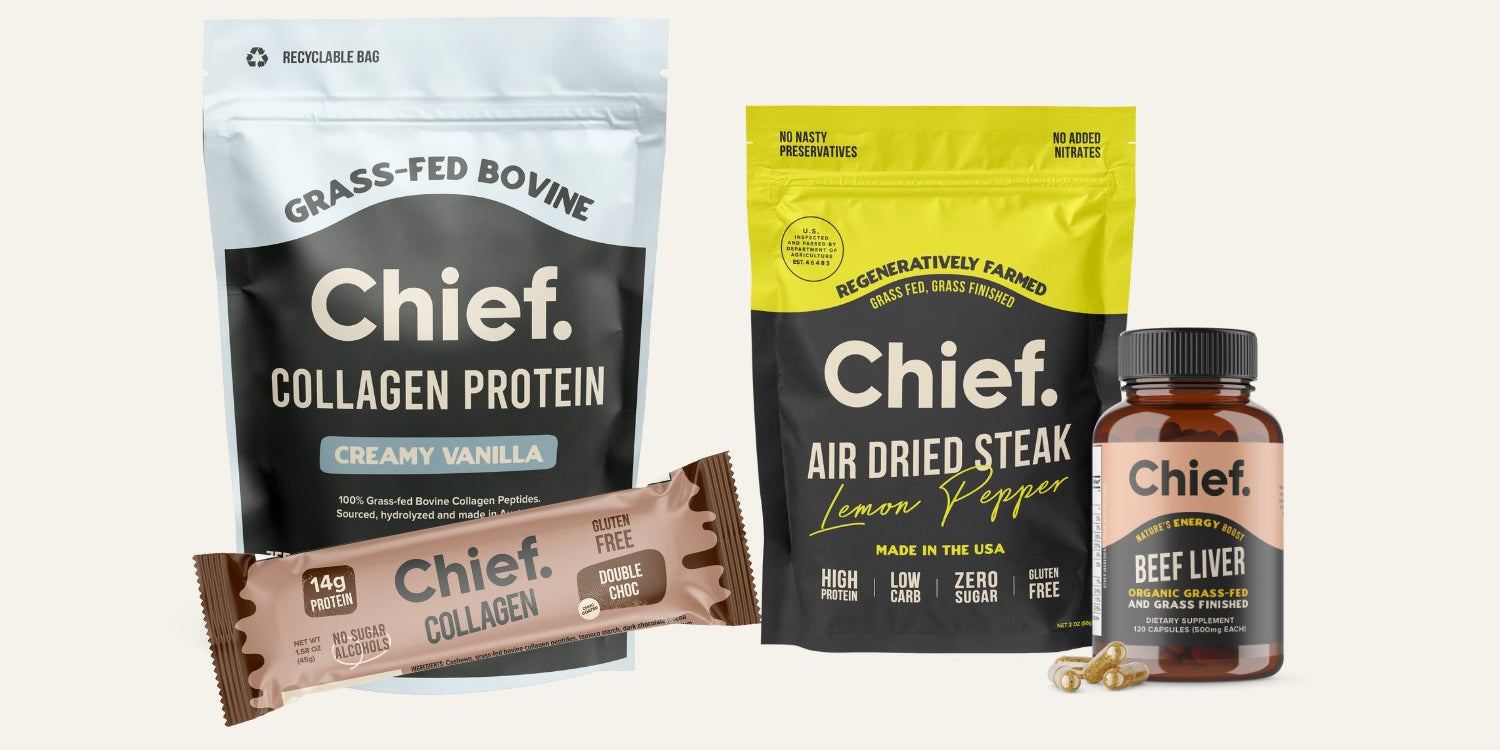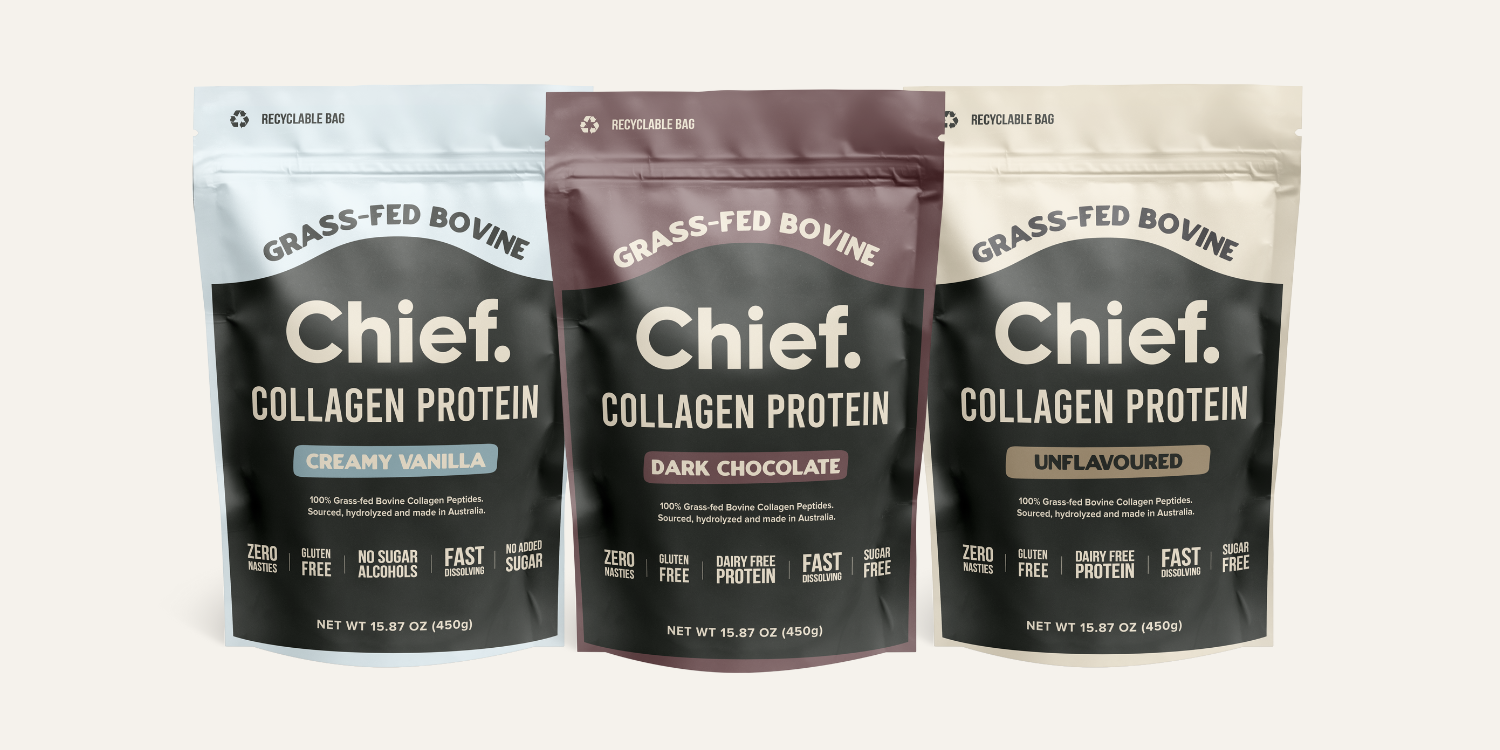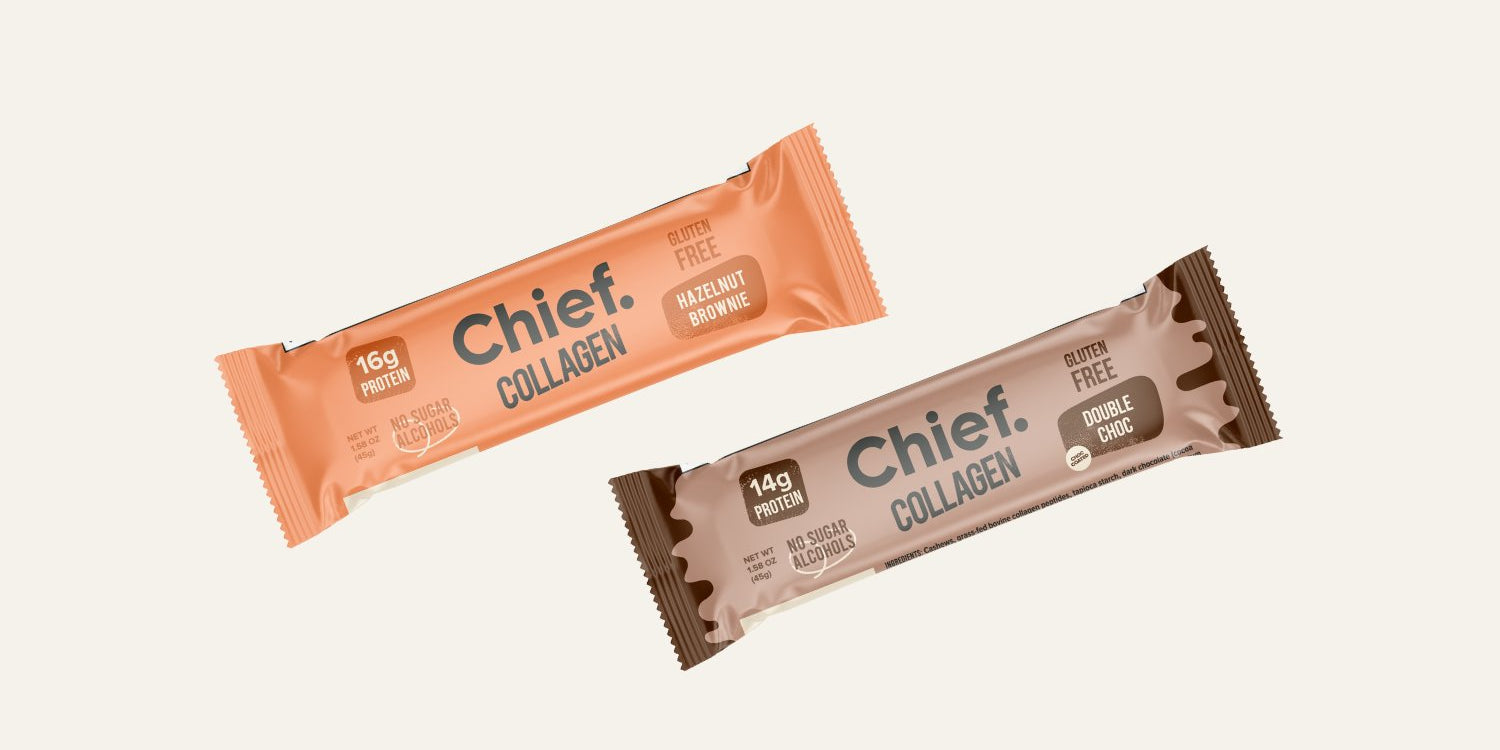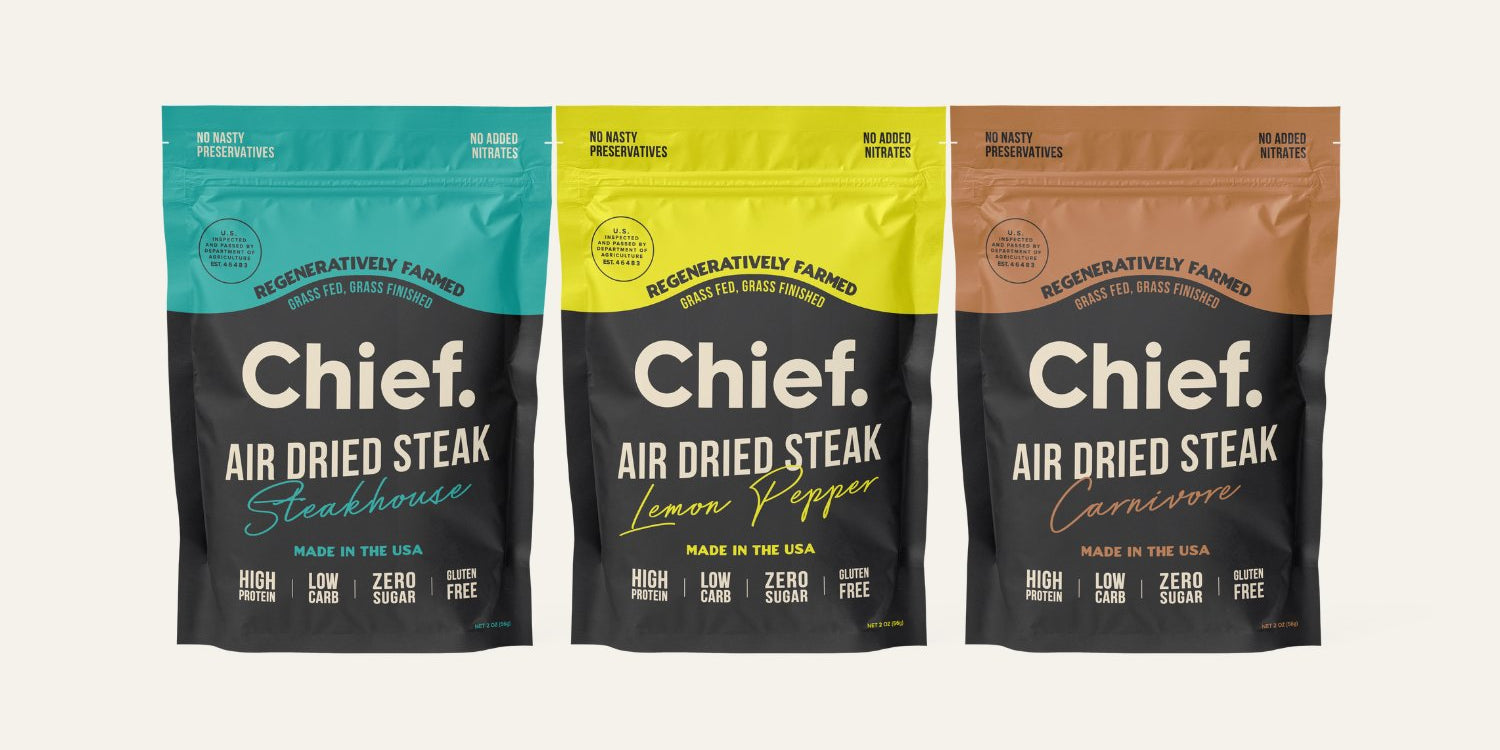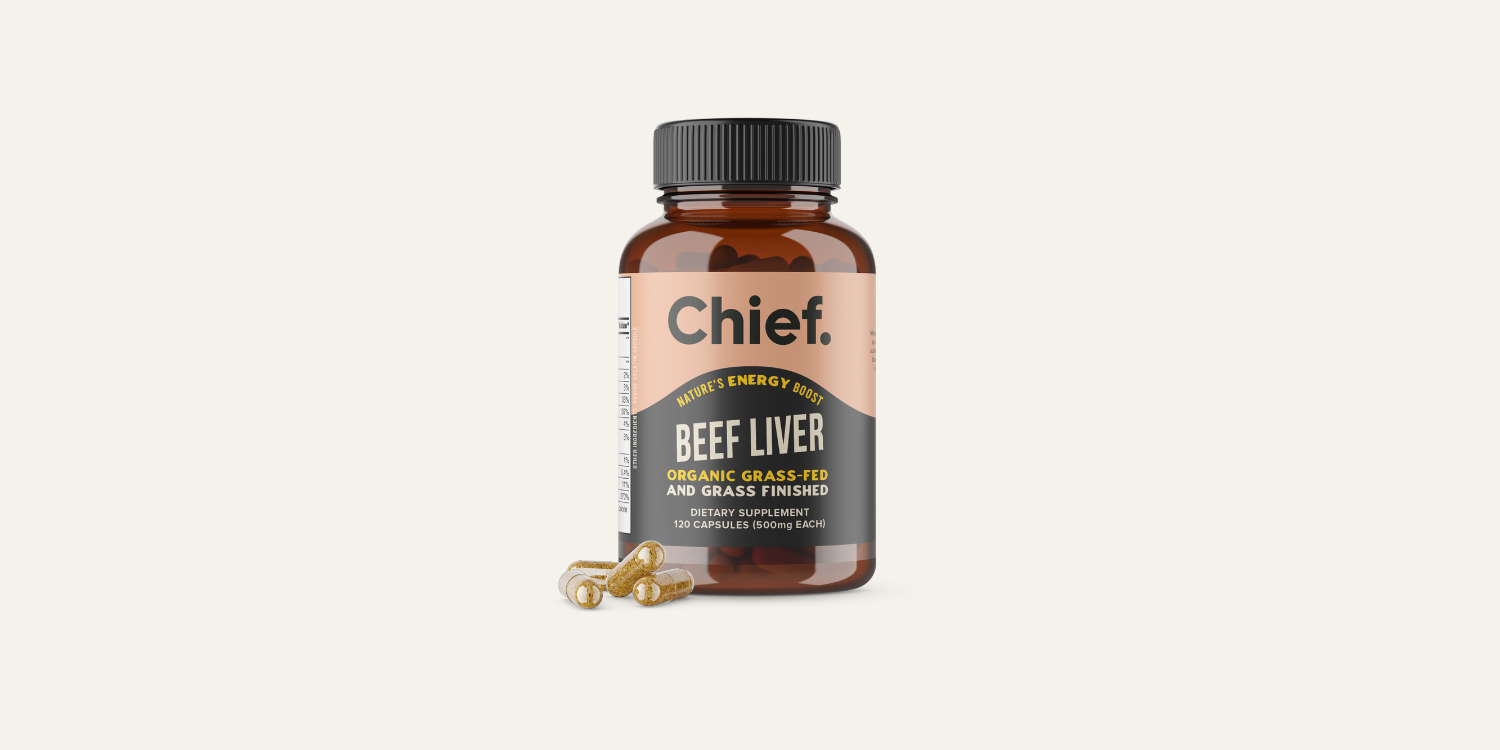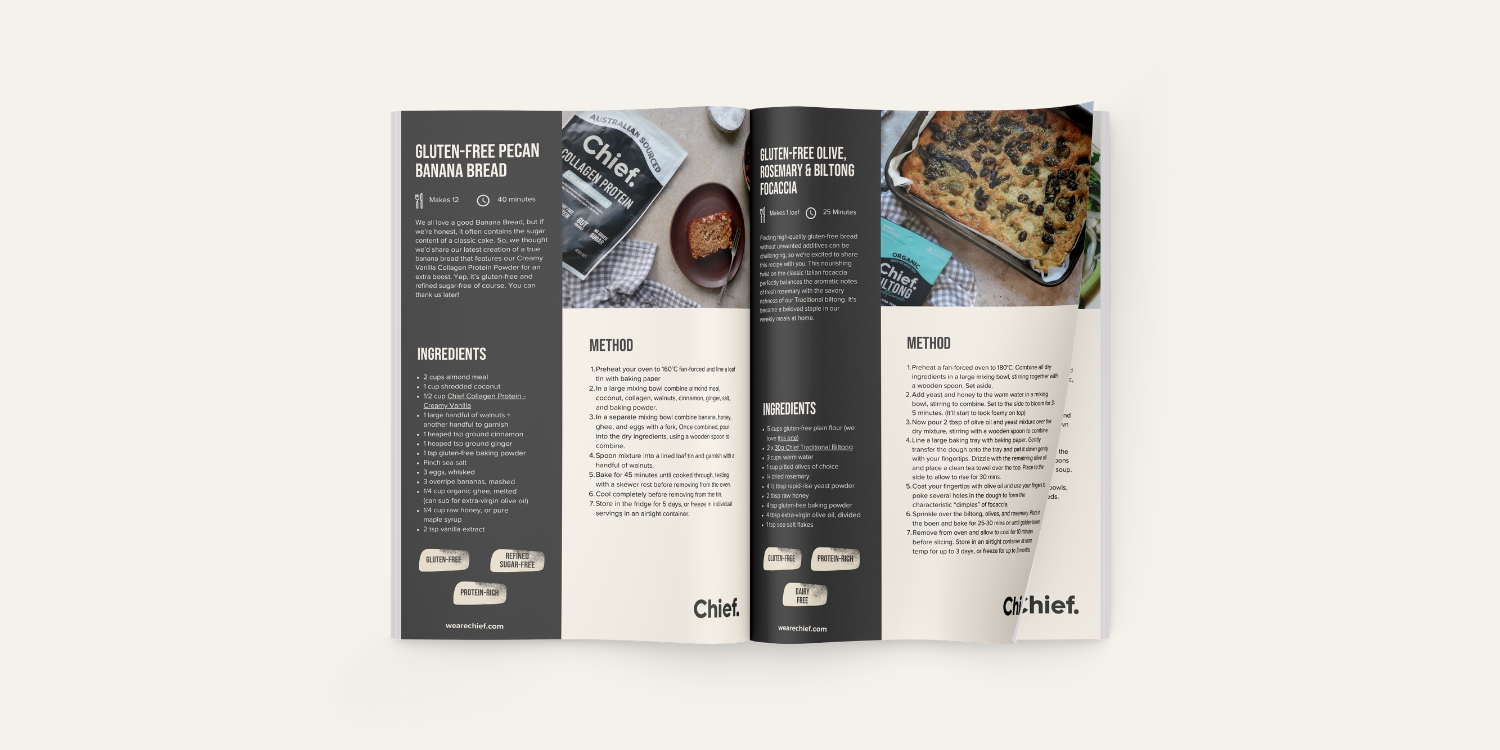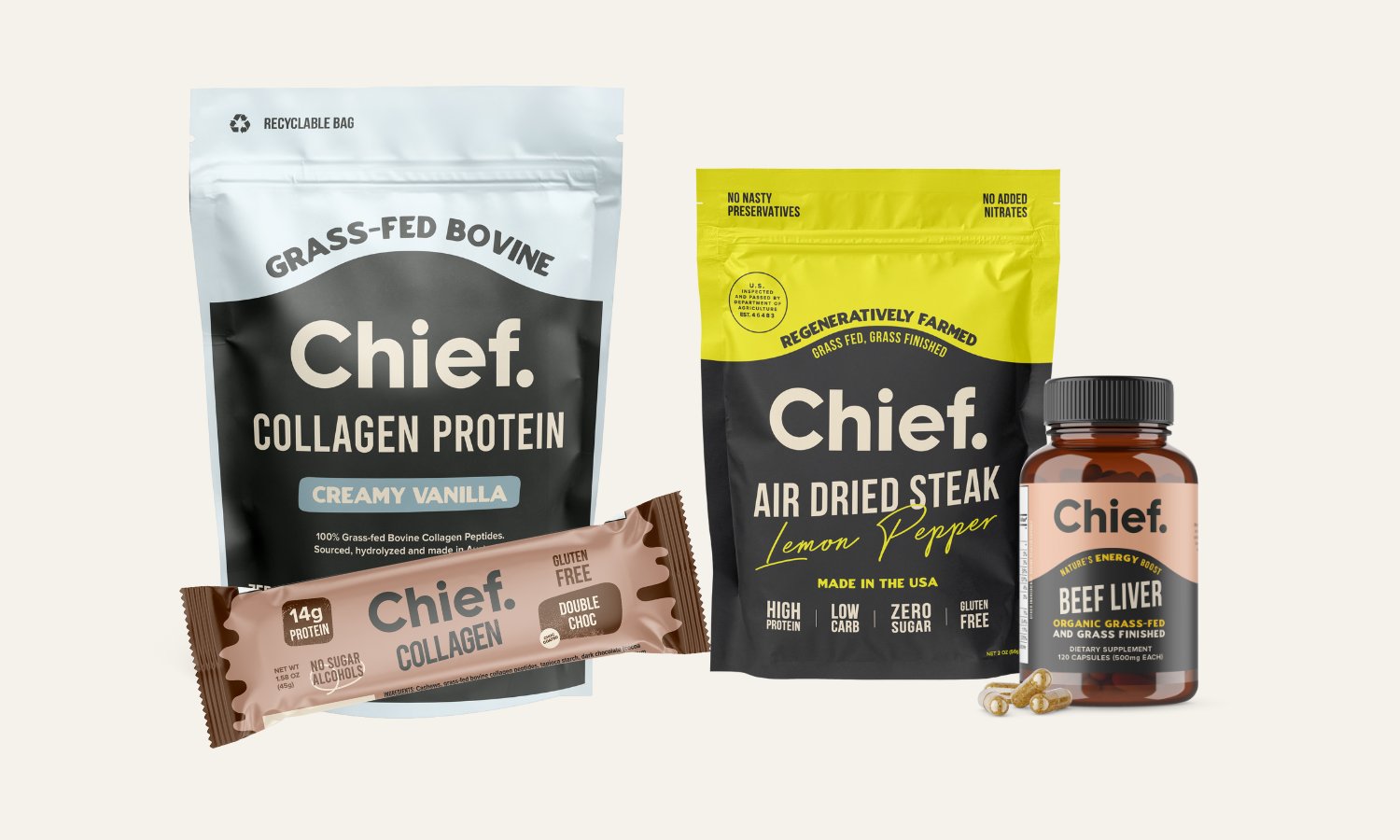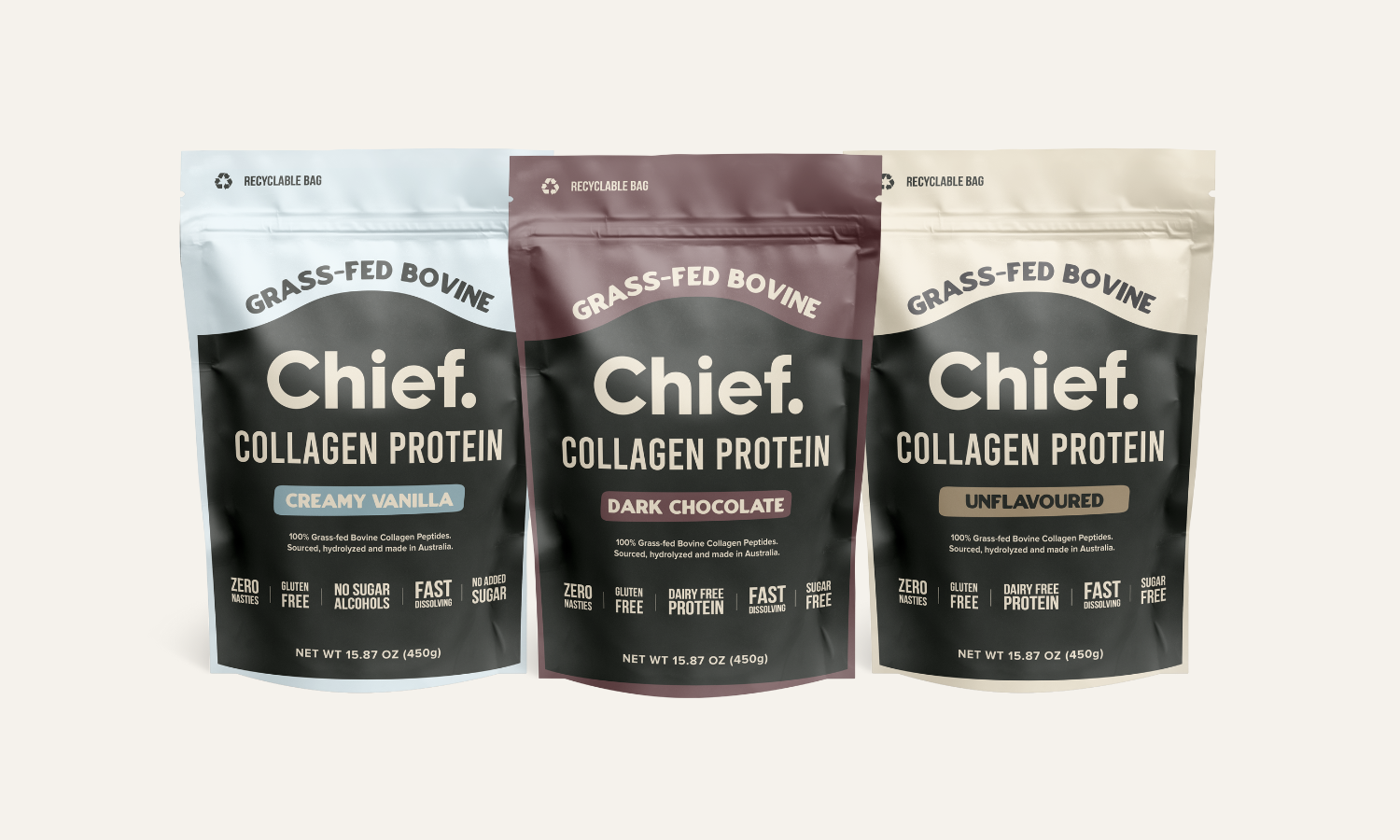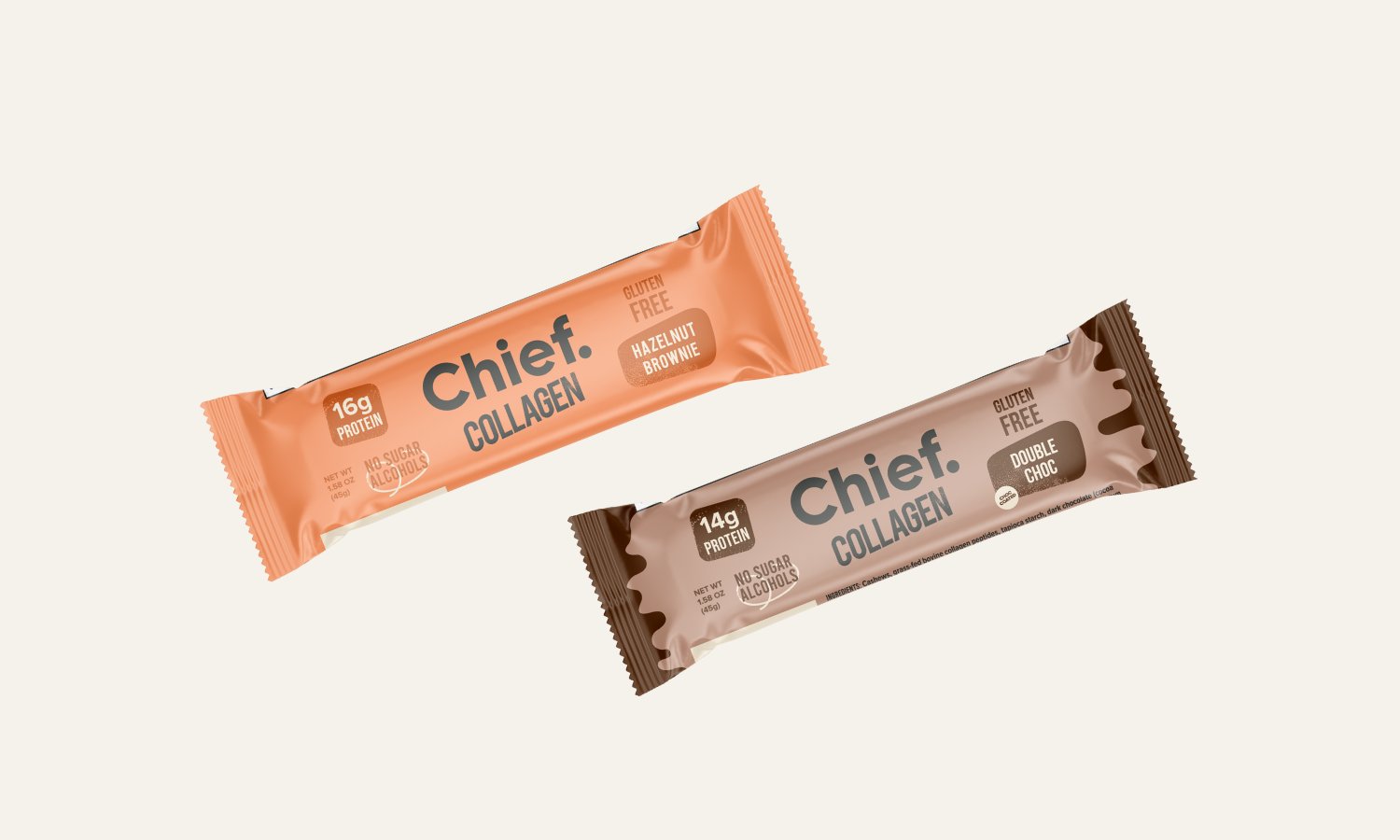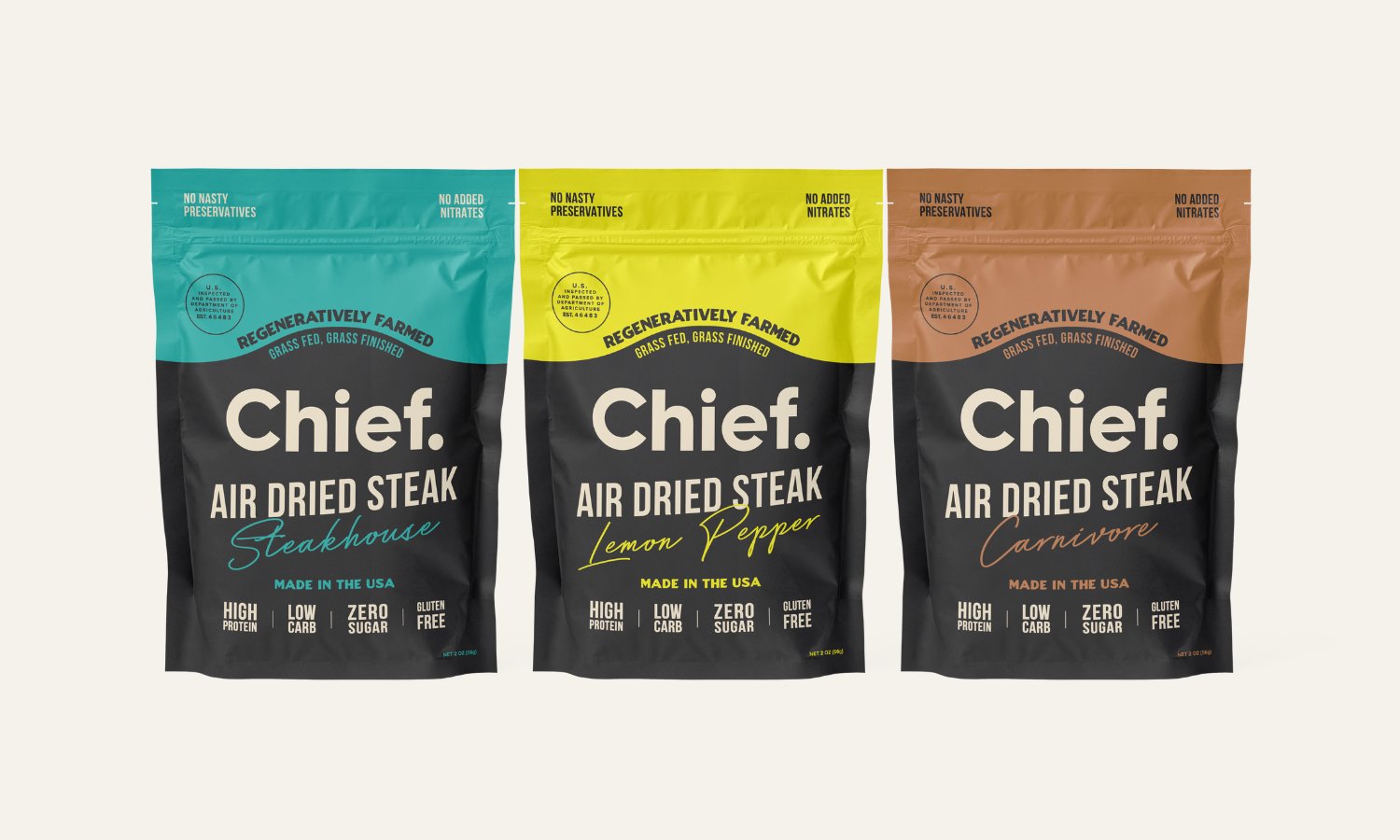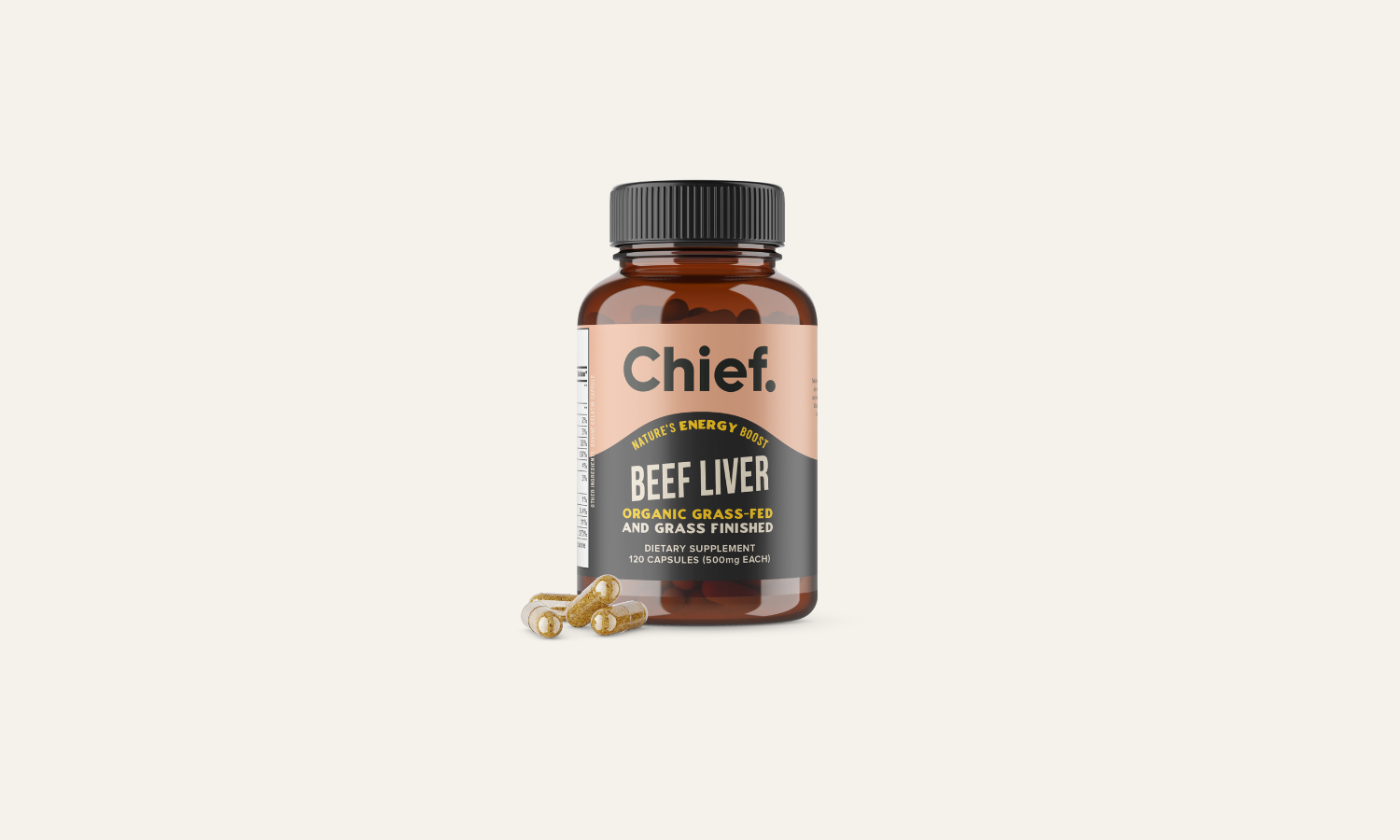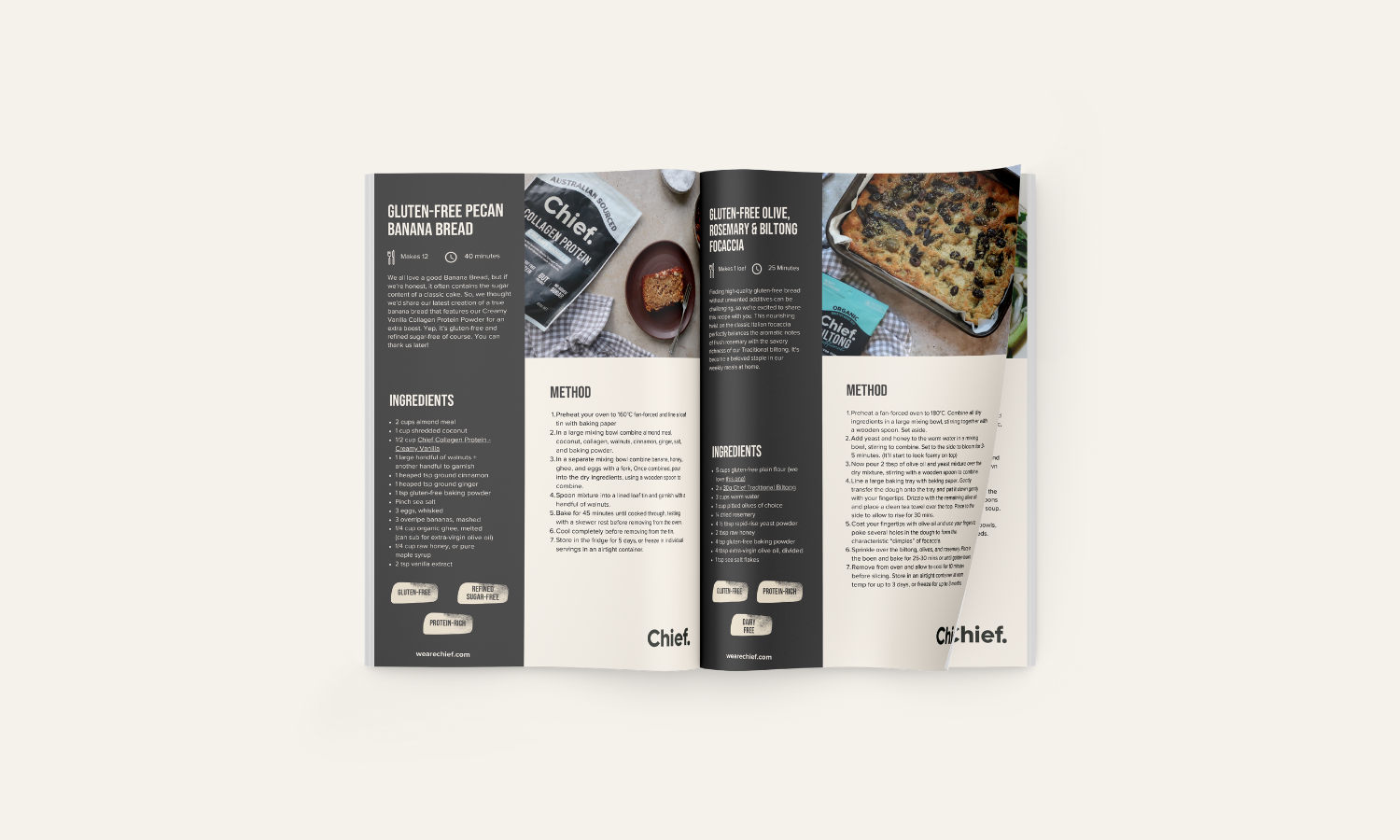Image: Charlie Arnott and some of the Chief team on his Regenerative Farm in Boorowa, NSW in 2020 - coping with extreme drought thanks to regenerative practices.
At Chief, we're passionate about helping people to be healthier, but you can't have healthy humans without a healthy planet. We support Regenerative Farming because it has some of the best solutions to solving a lot of our environmental challenges, and also our escalating health crisis.
About Industrial Farming
The industrialised agricultural system that dominates today is essentially about dominating and controlling the environment. It uses highly mechanised and intensive farming practices that include petrochemical based fertilisers, herbicides, fungicides and insecticides to maintain mono cultures (growing one type of species only and killing everything else that tries to get in the way).
Intensive farming (sometimes referred to as factory farming) can also include raising animals in close quarters, feeding them grain instead of their natural diet of pasture, and using hormones and antibiotics. The kind of stuff you see in anti-meat doco's.
Side note: Australia is actually pretty good here, most cows are pasture raised for around 85% to 90% of their lives, although 80% of supermarket beef does come from feedlots.
The science shows that this system produces food (both plant and animal) that is lacking in nutrients and is often harmful to our health.
Let’s take glyphosate (AKA Round Up) for example. This is a herbicide that is so widespread it’s now found in the breast milk of human mothers. It’s also incredibly detrimental to our gut microbiota, as are pesticides, which means it’s incredibly detrimental to our immune system and our health. It’s perhaps no surprise that many modern diseases of inflammation like Autism, Alzheimer’s, Parkinson’s and cancer are closely correlated with the increase in the pervasiveness of these chemicals in our food.
The other impact of industrial farming is that we’re degrading our soil, which is crucial for improving soil health. Our race to produce more from less is like taking drugs – it’s great to begin with but over time there’s a price to pay because you’ve drained the system and it’s out of balance. The result is soils that don’t hold a lot of nutrients (they "need" chemical inputs) because they don’t hold a lot of biomass, which means they don’t hold a lot of carbon.
But, don't we need to use industrial farming techniques if we’re going to feed 9 billion people in 2050? Unfortunately, if something is unsustainable we don't have any other choice. The good news is, the early data from regenerative practices are extremely encouraging - Peter Andrews, the God Father of Natural Sequence Farming, has great info if you're interested to dig deeper.
Side note: We're not trying to lump all non regenerative farmers into the "Industrial Agriculture" bucket, there are plenty of conventional farmers who care for their land and have good practices. Our only question mark is the use of chemicals which you read more about here.
Enter Regenerative Farming
Regenerative farming is about working with nature, not against it, with a focus on improving soil health. It shuns the use of pesticides, herbicides or fertilisers, which saves farmers a ton of money and means nature can do its thing. Instead of trying to maintain monocultures, regenerative farmers integrate multiple species and rotate the use of the land through different types of agriculture which protects the soil, improves the nutrient levels in the soil and gets more use from it at the same time.
Instead of dedicating a farm to one type of produce, like soy or wheat, they stack businesses to make their farms more profitable and more resilient – both financially and in terms of food produced. For example, producing eggs, honey, timber from trees (which are replanted of course - renewable resource), fruit, vegetables, livestock and more.
Regenerative farmers graze ruminant animals (cows, sheep, etc) like they used to in nature, eating their natural diet, not grain. Their natural diet includes grass of course but often other types of plants which gives them access to a broader range of nutrients. Nutrients that end up in the meat. This is the food that our grandparents ate. Food that science agrees is much better for our health.
So, there’s lots to like about regenerative farming right there. But here’s the kicker, it’s probably the best solution for combating climate change. Regenerative farming practices not only promote sustainable food production but also contribute to carbon sequestration and reduce greenhouse gas emissions.
Regenerative Farming reduces the carbon we’ve already pumped into the atmosphere
All organic material is made of carbon. Don’t think of plants as growing from the ground, think of them as growing from the air. Plants use the energy of the sun to take CO2 from the atmosphere and use the carbon (C) to grow, then release to oxygen (O2) back into the atmosphere. Excess carbon is sequestered back into the soil.
Will that make a difference. Yes! The soil contains more than three times the amount of carbon in the atmosphere and four times the amount stored in all living plants and animals. This is where we’ll have a real impact and this is where we need to be focusing our energy.
But what about animals, aren’t cows bad for the environment?
We need to stop thinking of meat versus plants and start thinking of industrial agriculture versus regenerative agriculture. Industrially farmed meat AND crops can be destructive to the environment.
Ruminants, like cows, can be an important part of the system when they’re managed in the right way.
When cows are managed to mimic the migratory movements of large herds of ruminants, grasslands thrive. This means keeping herds in dense packs and only giving them access to a paddock for a limited time, where their hooves churn up the soil and their dung and urine fertilises it.
This video gives a pretty good summary:
But what about methane from cows?
Here's a quote from Diana Rogers, Director of the film Sacred Cow (highly recommended) who sums it up best:
"When we are only looking at things in terms of "emissions" we are not taking in the full picture. Yes, cattle belch methane, but this is part of a natural BIOGENIC carbon cycle.
The methane enters the atmosphere and after 10 years, it's broken down into CO2 & H2O. The water becomes part of the water cycle (like rain) and the CO2 is taken up by plants. During photosynthesis, the O2 is released back into the air and we humans can live because we breathe this.
Then the C (carbon) is taken up by the roots, and parts of it are dripped down to microorganisms and fungi in the soil, which live on the carbon and in exchange, send the plant's roots the other nutrients it needs to live. Up to about 40% can be SEQUESTERED in the soil, when the cattle are managed well. Then, the cow eats grass (carbon) and the cycle happens again. Some of this carbon is pooped out; some of it becomes meat, leather, bones, etc.

This is VERY different than pumping up ancient carbon and methane from deep in the earth's core, introducing it to the atmosphere. That is not a cycle, it's a one way road."
Here's some more info on the biogenic carbon cycle.
But can't we just grow crops instead?
A favourite argument from plant based diet advocates in Australia is only 4% of our land is used for growing plants, but 56% of the land is used for grazing animals. Why can't we just flip that around!? What this stat fails to recognise is that only 6% of Australia is suitable for growing crops. The reason so much land is being used to graze animals is that's the only thing we can grow there. You can't just magically use that land for growing crops.
In conclusion
The logic of Regenerative Farming is undeniable. In fact, one of the world’s largest food companies General Mills agrees and is supporting the move to Regenerative Agriculture. Timberland is also getting involved as is Harris Farm here in Australia.
So, what can you do? We live in a system where investment follows demand so the solution is simple, we can create demand for regeneratively farmed products by buying them. Until regenerative certification becomes more commonplace, buy organic produce (which isn't necessarily regenerative, for example when using tilling which can damage soil biology) and/or grass-fed meat where possible.
If you’re in the food business, like we are at Chief, source your ingredients from regenerative farmers. If you can’t find them yet, focus on organic produce and/or grass-fed meat until you can.
We already source organic, grass-fed, grass-finished and regeneratively farmed beef. We're close to the same for our collagen source, and are working towards regenerative and organic where possible for all our ingredients. We also support Regenerative Farmers through our support of Thankful4Farmers.
Further resources
- Regenerative agriculture finds solid backing as decades of success show renewal
- Regenerative agriculture: how it works on the ground
- Regenerative Agriculture is Getting More Mainstream But How Scalable is it?
- The Regenerative Journey Podcast with Charlie Arnott
- Sacred Cow, The Case for (Better) Meat
- Kiss the Ground, Awakening people to the possibilities of regeneration
- The Biogenic Carbon Cycle

